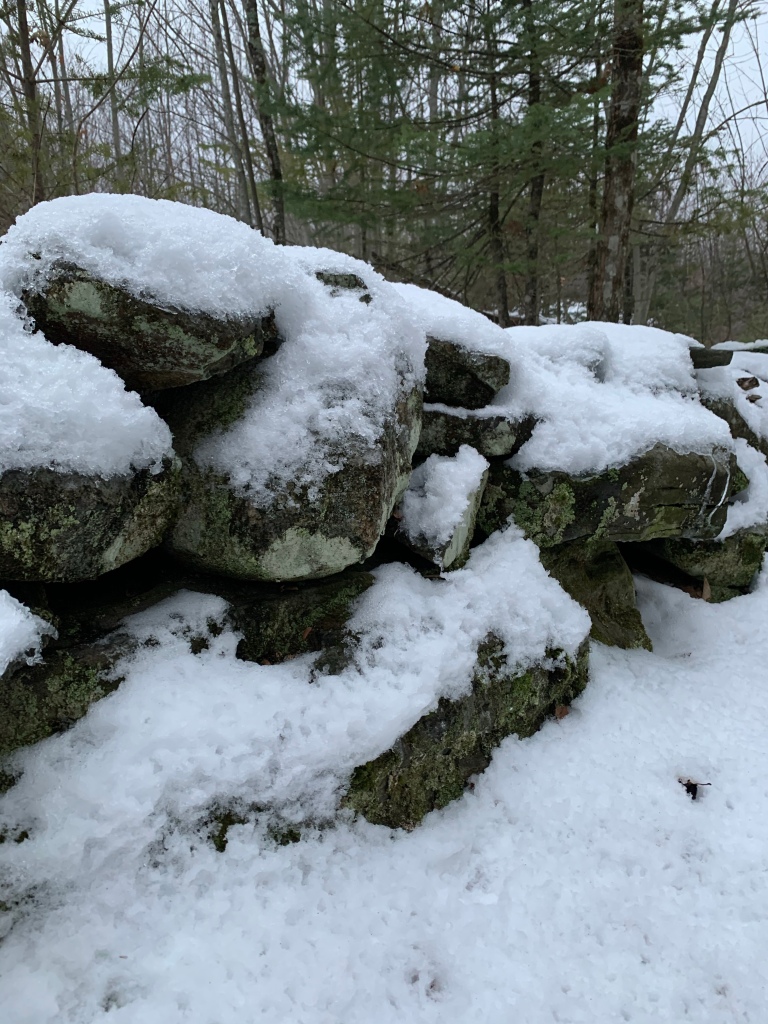
I am often struck by how *busy* our wood is. One of the joys of sitting in the middle of a 10 acre plot surrounded by empty lots is that *we* are the visitors to this little ecosystem and not the reverse. We try to live in partnership with our land…we don’t feel that we need to “claim” all of it for our cultivated purposes of gardens, lawns, etc.

Promoting meadow growth and merely maintaining the wooded lot encourages pollinators, birds, bats, owls, and other wildlife that will help our gardens and apple trees flourish. (We hope!) We don’t mind sharing the land with deer, mice, squirrels and chipmunks. Yes, they may raid the garden occasionally, steal the birdseed, and munch on the apple branches. But it’s just about finding a balance that you can live with. For so long, we humans have destroyed the environment in an attempt to manipulate and dominate it in all ways. It’s an age-old battle that we are fortunate to not need to wage here. We have the luxury of gardening and owning land for our own happiness, not for survival or for profit.

Briar and Bramble began life as a farm when it was first settled. Crisscrossing the property are long neglected examples of the quintessential New England stone wall. Maine soil is notoriously rocky and difficult to cultivate. I look at those walls and think of the back-breaking work it must have taken to clear the land and construct them. And how frustrating it must have been. Even building short lengths of garden fencing last summer had my husband and I throwing up our hands in exasperation. It sometimes seemed impossible to find a single place to sink a pole or post deeper than 6 inches! But it makes me appreciate what our predecessors had to do to make a life here.

Yet the walls were only the first step for that first family. Once the rocks were cleared, trees had to be felled, stumps pulled up or burned, soil turned, crops planted, and fields and livestock tended. I can understand why the battle began…if your…everything…depended on growing crops and raising livestock, you would not find deer, coyotes, mice, or even chipmunks very charming.
Man vs nature was a much different match in 1823, however. In 2021, we have luxury of not needing to struggle. And we have the added responsibility of the knowledge of our impact on even 10 acres. So we choose to encourage our wildlife and try to practice responsible conservation where we can. (Ask me if I’m still this enthusiastic when the snow melts and I am anxiously hovering over my young vegetable shoots and tender bulbs!!)

But I digress…
Winter is a wonderful time to reflect on the presence of the environment all around us…how complex, vibrant, and active it is, though often unseen. My husband and I were in our wood this past weekend, moving logs of firewood that he had cut from a nice stout ash that had fallen in a storm last year. As I walked from the house to the wood, I realized we were surrounded by tracks of all kinds…deer, mice, rabbits, squirrels, coyotes, neighboring dogs, birds, etc. Of course, I knew they are all there…we have feeders stocked in several trees for the birds (and red squirrels, grey squirrels, chipmunks…) The deer practically knock on the door. I have found a family of mice growing in one of my flower pots in the shed. And the game camera has provided us with some entertaining sightings as well- a bobcat, a flying squirrel, and the slowest moving porcupine I have ever seen. Still, seeing all the tracks in the snow and the paths they made was a poignant reminder that we are surrounded by activity. We are but one small part of a whole community here…each track is a story of a life being lived, whether great or small. Passing like ghosts through the wood, they leave only these small traces to show that they are there, weaving between the trees and through the crashing, raucous, frenetic lives of the humans around them, if only for a moment.









Beautifully written and lovely photos.
LikeLiked by 1 person
Thank you!!!! 😊
LikeLike
A beautifully evocative post. I also have great respect for those who first worked the land, it is difficult to imagine the amount of hard labour required. Building drystone walls takes immense strength and great skill.
LikeLike
A beautiful post imbued with history and reverence for the land and all those who live on it.
LikeLike